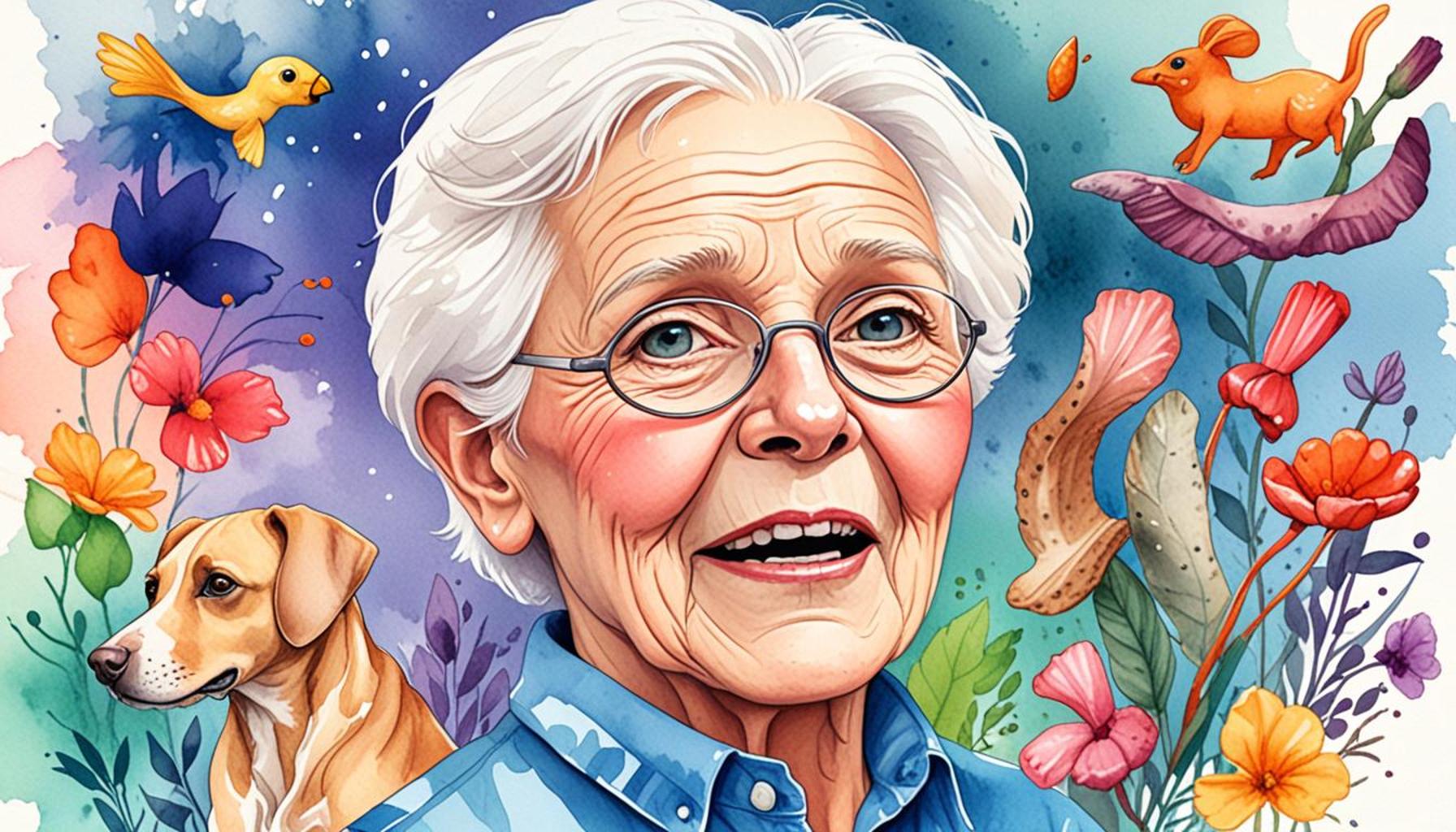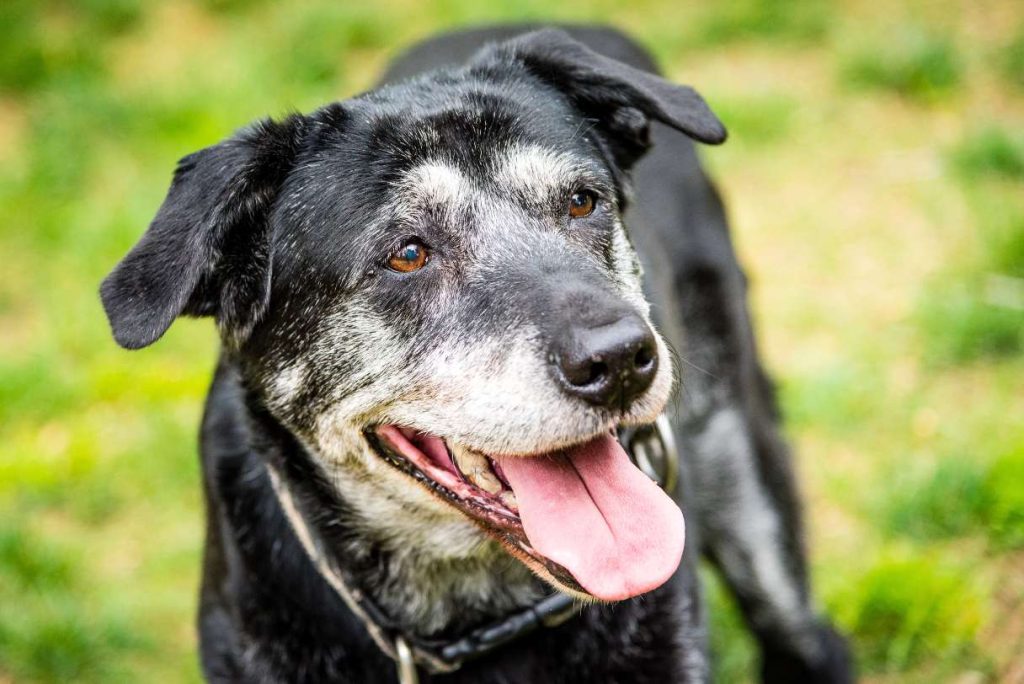How Aging Affects Pet Behavior: Common Changes and How to Handle Them

The Journey of Caring for Aging Pets
As our beloved pets grow older, their behavior can shift dramatically, often presenting their owners with unique challenges. Understanding these transformations is essential for enhancing their quality of life and deepening the bond we share with them. Here, we delve into several key aspects that every pet owner should consider when caring for their senior companions.
- Cognitive decline: Cognitive dysfunction syndrome (CDS) in pets is akin to dementia in humans. Dogs and cats may exhibit signs such as disorientation, disrupted sleep patterns, or changes in their usual habits, such as forgetting previous training or becoming lost in familiar surroundings. For example, a once house-trained dog may start having accidents indoors. Keeping their environment consistent, engaging in interactive play, and maintaining a routine can help stimulate their minds.
- Physical health issues: Aging often leads to health problems such as arthritis, which can hinder mobility. If your pet hesitates to jump onto the couch or struggles with stairs, it could indicate pain. Regular vet check-ups are essential for early detection of issues, and treatments can range from pain management medications to physical therapy. Adjusting your pet’s living space by providing ramps or orthopedic beds can enhance their comfort and mobility.
- Changes in social behavior: As pets age, they may become less social or more irritable. A once-gregarious cat may prefer solitude, or a formerly playful dog might shy away from other dogs at the park. This could stem from discomfort or fear associated with their physical limitations. Recognizing these shifts allows owners to provide a supportive environment that respects their pets’ needs. Engaging younger pets carefully or allowing for quiet time can help alleviate stress for senior pets.
Aging pets often face a blend of emotional and physical hurdles that influence their demeanor. Transitioning from a lively pup or kitten to a more reserved senior is common. Many pet owners may inadvertently overlook signs of aging, leading to misinterpretations of their pets’ behavior. In the United States, studies have shown that a significant percentage of pet owners are unaware of the specific needs of their aging animals, highlighting the need for increased awareness and education regarding geriatric pet care.
Being proactive in adapting your approach to suit your aging pet’s needs is beneficial. Routine veterinary examinations can help in early intervention for health problems, while a balanced diet rich in necessary nutrients can support their overall well-being. This article outlines prevalent behavioral changes in aging pets and offers actionable strategies for providing a fulfilling and comfortable life as they transition into their golden years.
DISCOVER MORE: Click here to find pet adoption resources in your area
Understanding Cognitive Changes in Aging Pets
As pets age, many owners may notice a gradual decline in their cognitive functions. This phenomenon, known as Cognitive Dysfunction Syndrome (CDS), can be particularly distressing for both pets and their owners. Symptoms may manifest in various ways, including disorientation, where pets seem lost in familiar settings or exhibit signs of confusion during daily activities. For example, a previously confident dog might suddenly hesitate to enter a room they have always frequented, or a cat may forget where their litter box is located.

Cognitive changes can also include a shift in sleep patterns, where pets may become more restless at night, leading to disrupted sleep for themselves and their owners. Furthermore, behaviors such as excessive vocalization, increased anxiety, or changes in eating and grooming habits can signify cognitive decline. Understanding these signs is crucial for pet owners as they seek to create a supportive environment for their aging companions.
- Routine Mental Stimulation: Engaging your pet’s mind can help slow the progress of cognitive decline. Interactive toys, puzzles, and simple training exercises can keep their brains active. Consistency in daily routines also provides comfort and predictability, aiding in reducing confusion.
- Environmental Enrichment: By modifying your home environment, you can enhance your pet’s quality of life. Consider placing familiar toys or bedding in areas they tend to frequent, or rearranging common routes to encourage exploration without causing disorientation.
- Veterinary Consultation: Regular veterinarian check-ups are essential for detecting signs of cognitive decline early on. Some pets may benefit from specific medications or supplements designed to support brain function. Discussing your observations with a vet can pave the way for targeted interventions.
In addition to cognitive changes, aging pets often encounter physical challenges that can impact their overall behavior. Arthritis is a common condition that affects mobility and can lead to frustration or irritability. An otherwise energetic dog may start to avoid play because movement is painful. Understanding the link between physical discomfort and behavioral changes is vital for owners looking to enhance their pet’s quality of life.
Moreover, as pets age, their perception and response to their surroundings can change. Senior pets may become more sensitive to noises or new situations, which might cause them to retreat or exhibit signs of anxiety. This evolution in temperament can sometimes leave owners puzzled when trying to interpret their pet’s newfound reticence.
By recognizing these common behavioral changes linked to aging, pet owners can better equip themselves to provide the necessary care, ensuring that senior pets remain comfortable and content. Building awareness of these changes plays a vital role in navigating the later stages of a pet’s life, allowing for an improved understanding of how to meet their evolving needs effectively.
| Behavioral Changes | How to Address |
|---|---|
| Increased Anxiety | Provide a familiar environment, use calming products. |
| Decreased Social Interaction | Encourage gentle playtime, arrange social visits. |
| Changes in Sleep Patterns | Ensure a comfortable sleeping area, maintain routines. |
| Loss of Training | Reinforce commands with positive reinforcement, gradual retraining. |
As pets age, they can experience a variety of behavioral changes that reflect their shifting physical and emotional states. Issues such as increased anxiety are notably common among older pets; they may become easily startled by loud noises or changes in their surroundings. To diminish their anxiety, creating a familiar space with soft bedding and utilizing calming products like pheromones can be beneficial.Additionally, older pets sometimes exhibit decreased social interaction, feeling less inclined to engage with their owners or other animals. Encouraging gentle playtime and arranging social visits in a calm manner can nurture their social behavior and rekindle fond interactions. Moreover, changes in sleep patterns are prevalent as age sets in; pets may require more sleep or suffer from disrupted sleep. Considering a cozy sleeping environment and adhering to a consistent routine can significantly improve their rest quality. Finally, loyal companions may also show a loss of previously learned behaviors and commands. Employing positive reinforcement methods and gentle retraining can help regain their knowledge, reducing frustration for both owner and pet. Understanding these changes not only aids in providing better care but enhances the quality of life for aging pets.
LEARN MORE: Click here to discover the importance of nutrition for your pets
Physical Changes and Their Impact on Behavior
Aging pets often experience a range of physical changes that can significantly impact their behavior and quality of life. Conditions such as arthritis, joint stiffness, and decreased muscle mass are quite common in senior pets. These physical ailments can lead to an obvious decrease in activity levels. For instance, a once-vibrant dog that loved long walks may now tire quickly, or a previously social cat might prefer lounging in a comfortable spot rather than engaging in playful activities.
Furthermore, sensory perception often diminishes with age. Many pets experience a decrease in vision or hearing capability, leading to a sense of vulnerability. An older dog might suddenly bark at nothing or be startled by a soft sound that they could easily ignore in their younger days. Similarly, a cat that used to leap gracefully onto high perches might become hesitant as they struggle to see the height clearly or feel less secure about their balance. These shifts in capabilities can lead to increased anxiety and changes in behavior, often making pets less willing to socialize or explore new environments.
Signs of Discomfort and How to Address Them
Recognizing signs of discomfort is essential for aging pets, as they often mask pain rather than show it. Some indicators include excessive grooming, changes in appetite, not wanting to be touched, or changes in their sleeping patterns. Pet owners should perform regular checks on their pets for any signs of physical distress. If you notice your pet limping or exhibiting reluctance to jump or climb stairs, consult your veterinarian promptly. A thorough examination can lead to an effective treatment plan, which may involve pain relief medication or need for additional veterinary interventions.
- Modify Exercise Routines: Adapt your pet’s activity to align with their physical abilities. Gentle exercises like short walks or low-impact playtime can help maintain muscle strength and joint flexibility without overexertion.
- Comfortable Living Space: Providing a supportive bed and easy access to favorite spots in the house can help mitigate discomfort. Consider using ramps or lower furniture to assist your pet in moving about safely.
- Temperature Control: Aging pets may become more sensitive to extreme temperatures. Ensure they have a comfortable, climate-controlled environment to minimize their discomfort.
Adding to the complexity, aging can also lead to changes in social dynamics among pets. Some senior pets may become more solitary, preferring to retreat to quiet spaces away from young or boisterous housemates. Alternatively, a once-dominant pet may display submissive behaviors as they grow older, leading to conflicts or confusion when interacting with other animals. It’s important for pet owners to monitor these interactions to maintain a peaceful coexistence. Providing separate spaces or creating routines that respect the needs of all pets can help alleviate tension.
By staying aware of these changes and implementing strategies to manage them effectively, pet owners can enhance their senior pets’ lives, fostering a supportive atmosphere that respects their evolving needs. Adjustments made during this phase can not only alleviate discomfort but also promote a deeper bond with aging companions, enriching the final chapters of their lives.
DISCOVER MORE: Click here to learn about natural supplements for your pet</
Conclusion
Aging is an inevitable journey that all pets undergo, showcasing profound changes in both behavior and physical capability. As our beloved companions transition into their senior years, it’s crucial for pet owners to understand and recognize the multitude of shifts that can impact their pets’ quality of life. From decreased activity levels to alterations in social dynamics, being attuned to these changes allows for timely interventions that can enhance their overall well-being.
Implementing practical strategies, such as modifying exercise routines, creating a comfort-focused living environment, and monitoring for signs of discomfort, enables pet owners to cater to their aging pets’ unique needs. This attentiveness not only alleviates their physical ailments but also fosters emotional stability as pets navigate this new phase of life. Beyond basic care, establishing a calm routine and providing individual attention can nurture trust and love, deepening the bond between pets and their owners during their twilight years.
As you embark on this journey with your aging companion, remember that knowledge is power. Stay informed about the common changes that occur due to aging and remain proactive in seeking veterinary advice. By prioritizing your pet’s health and comfort, you can ensure that these golden years are filled with dignity, love, and joy, ultimately making every moment spent together as rewarding as possible. Embrace this transition with patience and empathy, and you will both thrive together, celebrating the lifelong companionship you share.



